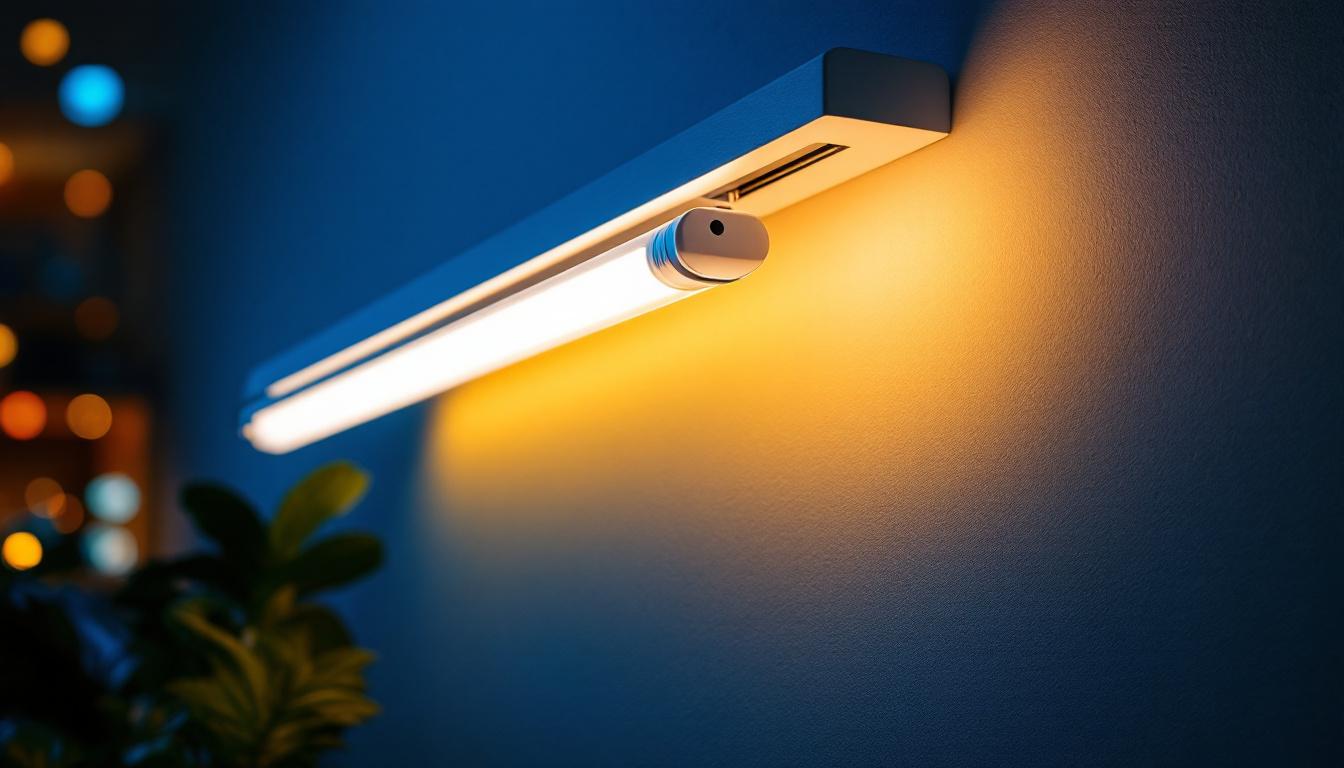
As a lighting contractor, understanding the intricacies of your craft is essential for delivering quality service to your clients. One common issue that often arises is the blinking light bulb, a problem that can be both frustrating and perplexing. This article provides a comprehensive guide to diagnosing and resolving this issue, along with tips to enhance your overall expertise as a lighting contractor.
Before diving into solutions, it’s crucial to understand the potential causes of blinking light bulbs. This knowledge will not only help in troubleshooting but also in educating clients about their lighting systems.
One of the primary reasons for blinking light bulbs is electrical issues. This can include problems such as loose connections, faulty wiring, or inadequate voltage supply. A loose connection can cause intermittent contact, leading to flickering. Similarly, if the wiring is damaged or not properly installed, it can create a poor electrical flow, resulting in blinking lights.
Moreover, voltage fluctuations can occur due to various factors, including overloading circuits or issues with the electrical supply from the utility company. Understanding these factors is essential for diagnosing the problem accurately. In some cases, older homes may have outdated electrical systems that cannot handle the demands of modern appliances and lighting, leading to frequent blinking. Homeowners should consider having their electrical systems evaluated by a professional to ensure they meet current safety standards and can support their lighting needs.
Another common cause of blinking bulbs is the use of incompatible bulbs with the fixtures or dimmers. For instance, using LED bulbs with older dimmer switches designed for incandescent bulbs can lead to flickering. It’s vital to ensure that the bulbs used are compatible with the fixtures and the electrical systems in place.
Additionally, some LED bulbs may not be designed to work with specific types of dimmers, leading to inconsistent performance. Always check the specifications and compatibility before installation. Furthermore, the wattage of the bulbs should match the fixture’s requirements; using bulbs with higher wattage than recommended can not only cause flickering but may also pose a fire hazard. Educating clients on the importance of matching bulbs to their fixtures can help prevent these issues and ensure a safer lighting environment.
Environmental factors can also play a significant role in the performance of light bulbs. For example, extreme temperatures can affect the functionality of certain bulbs, particularly fluorescent ones. If a bulb is exposed to cold temperatures, it may flicker or blink when first turned on. Understanding these environmental influences can help in selecting the right bulbs for specific locations.
Additionally, humidity levels can impact the performance of light fixtures, especially in areas like bathrooms or kitchens where moisture is prevalent. Excessive humidity can lead to corrosion or damage to the electrical components, resulting in flickering lights. It’s advisable to use moisture-resistant fixtures and bulbs in these environments to enhance longevity and performance. By considering both temperature and humidity, homeowners can make informed decisions about their lighting choices, ensuring that their systems function optimally regardless of external conditions.
Once the potential causes have been identified, the next step is to diagnose the problem accurately. A systematic approach can save time and ensure a thorough resolution.
Start with a visual inspection of the fixture and the bulb itself. Check for any signs of damage, such as burnt-out filaments in incandescent bulbs or discoloration in LED bulbs. Look for loose connections at the socket and ensure that the bulb is securely fitted. A simple adjustment can sometimes resolve the issue.
Additionally, inspect the wiring and connections in the fixture. Look for any frayed wires or signs of overheating, which could indicate a more serious electrical issue that needs addressing. Pay attention to the condition of the fixture itself; corrosion or rust can also lead to poor connections and affect performance. If the fixture is old or has been exposed to moisture, it may be time to consider a replacement to avoid further complications.
If the visual inspection does not reveal any obvious problems, the next step is to test the circuit. Use a multimeter to check for proper voltage levels at the fixture. This will help determine if there are any fluctuations or inconsistencies in the electrical supply.
Moreover, testing the circuit can reveal if there are any grounding issues or if the circuit is overloaded. Understanding the electrical load on the circuit can help in making necessary adjustments to prevent future problems. It’s also wise to check for any tripped breakers or blown fuses in the electrical panel, as these can often be the root cause of lighting issues. Keeping a log of voltage readings over time can help identify patterns that may indicate underlying problems.
Engaging with clients is crucial during the diagnostic process. Ask questions about when the blinking occurs—whether it happens consistently or only at certain times. This information can provide valuable insights into the underlying issues. Additionally, educate clients about the potential causes and solutions, helping them understand the importance of proper lighting maintenance.
Furthermore, it can be beneficial to discuss the client’s overall electrical setup and any recent changes they may have made, such as adding new appliances or altering existing circuits. Understanding their usage patterns and any concerns they may have can lead to a more comprehensive diagnosis. Providing clients with tips on how to maintain their lighting systems and encouraging them to report any irregularities promptly can foster a proactive approach to electrical safety and efficiency, ultimately enhancing their satisfaction and trust in your services.
After diagnosing the problem, the next step is to implement effective solutions. Depending on the cause, different approaches may be necessary.
If loose connections are identified as the cause, ensure that all connections are secure. Tighten any loose screws at the socket and check the wiring connections in the fixture. If necessary, replace any damaged wires to ensure a stable electrical flow.
In some cases, it may be beneficial to use wire connectors or electrical tape to secure connections further. This can help prevent future issues related to loose or damaged wiring.
If the issue stems from incompatible bulbs, replacing them with suitable options is essential. Ensure that the new bulbs are compatible with the fixtures and any dimmer switches in use. This may involve selecting LED bulbs specifically designed for use with dimmers or opting for traditional incandescent bulbs if necessary.
Furthermore, consider recommending energy-efficient options to clients that align with their preferences and lighting needs. This not only resolves the blinking issue but also promotes sustainability.
For more complex electrical issues, it may be necessary to involve a licensed electrician. If voltage fluctuations or circuit overloads are suspected, a professional can assess the electrical system and make necessary adjustments. This may include upgrading the circuit, adding additional circuits, or addressing grounding issues.
Educating clients about the importance of proper electrical maintenance can also help prevent future problems. Encourage them to schedule regular inspections to ensure their lighting systems remain in optimal condition.
Preventing issues before they arise is key to maintaining a successful lighting contracting business. Implementing proactive measures can save time and resources while enhancing client satisfaction.
Encouraging clients to schedule regular maintenance checks can significantly reduce the likelihood of blinking light bulbs and other issues. During these checks, inspect all fixtures, wiring, and bulbs for any signs of wear or damage.
Additionally, provide clients with a maintenance checklist that outlines what they should look for between professional visits. This can empower them to take an active role in maintaining their lighting systems.
Education is a powerful tool in the hands of a lighting contractor. Take the time to explain the importance of using compatible bulbs, maintaining proper voltage levels, and addressing electrical issues promptly. Providing clients with knowledge about their lighting systems can lead to better decision-making and fewer problems in the long run.
Consider creating informative materials, such as brochures or online resources, that clients can refer to when they have questions about their lighting systems. This not only positions you as an expert but also builds trust and rapport with your clients.
The lighting industry is constantly evolving, with new technologies and trends emerging regularly. Staying updated with these developments can enhance your expertise and improve your service offerings. Attend industry conferences, participate in workshops, and subscribe to relevant publications to keep your knowledge current.
Moreover, understanding advancements in energy-efficient lighting and smart home technologies can help you provide clients with innovative solutions that meet their needs and preferences.
Mastering the art of troubleshooting blinking light bulbs is an essential skill for lighting contractors. By understanding the potential causes, diagnosing problems effectively, and implementing appropriate solutions, contractors can enhance their service quality and client satisfaction.
Moreover, adopting preventive measures and staying informed about industry trends can position contractors as trusted experts in their field. Ultimately, a proactive approach to lighting maintenance not only resolves immediate issues but also fosters long-term relationships with clients, ensuring a successful and sustainable business.
Ready to elevate your lighting projects with the highest quality materials? Look no further than LumenWholesale for all your lighting needs. We provide lighting contractors like you with spec-grade lighting products that meet the most rigorous industry standards. With our competitive wholesale pricing and the convenience of free shipping on bulk orders, you can ensure every project shines without breaking the bank. Say goodbye to local distributor markups and hello to the value you deserve. Wholesale Lighting at the Best Value is just a click away. Make the smart choice for your business with LumenWholesale today.

Discover essential resources and expert tips for lighting contractors to master the installation and maintenance of battery-operated exit signs.

Discover why Outdoor LED Wall Packs are essential for any lighting project.

Discover the common pitfalls lighting contractors face with 60 Watt Type B bulbs and learn how to avoid them.

Discover how T5 LED replacements can transform your lighting projects with enhanced efficiency and longevity.